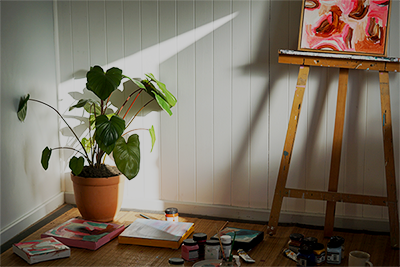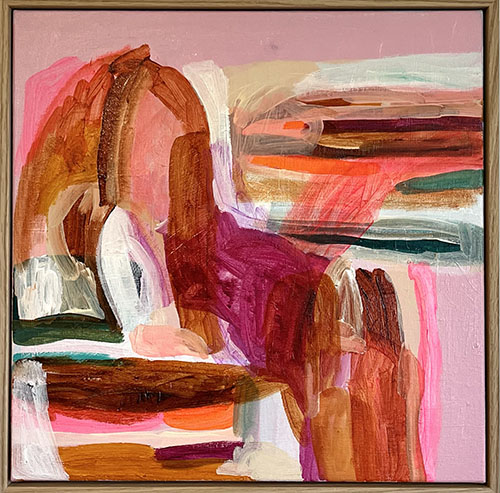Ever stood in front of a painting and thought, “What… am I looking at?” yep, i have too. you are not alone.
Welcome to abstract art — where confusion often gives way to fascination. If you’ve ever felt like you “don’t get it,” you’re not alone. But here’s a secret: you’re not supposed to “get” abstract art. You’re supposed to feel it.
Whether you’re just starting to explore the art world or are simply curious about those bold, beautiful, and sometimes baffling pieces, this guide will help you see abstract art in a whole new way.
So… What Is Abstract Art, Really?
Abstract art doesn’t try to replicate reality. Instead, it’s about emotion, energy, and imagination — told through color, shape, form, and texture. It removes the familiar — faces, landscapes, objects — and leaves behind pure expression.
Think of it like music without lyrics. You don’t need to understand every note to be moved by it. Abstract art invites you to respond, to interpret, and to feel — all without needing a map.
Abstract art isn’t trying to show you something. It’s trying to make you feel something.
Some pieces are soft and meditative. Others are bold and chaotic. Some are playful. Some are heavy. But they all invite you to engage with them on your own terms.
A (Very) Short History of Abstract Art
Abstract art isn’t new — it’s just often misunderstood.
-
Wassily Kandinsky, often called the father of abstract art, believed that colors and shapes could express spiritual truths. His work was a kind of visual symphony.

-
Piet Mondrian took a radically different approach, reducing everything to grids and primary colors. Order, balance, and simplicity were his language.
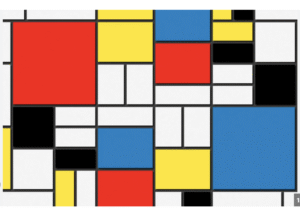
-
Later came the Abstract Expressionists, like Mark Rothko, who created vast color fields meant to evoke deep emotion, and Jackson Pollock, who let movement and chaos take the lead through paint splatters and drips.
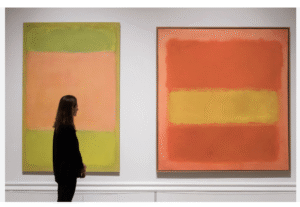
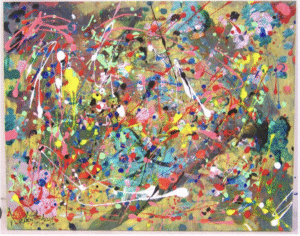
Today, abstract art lives everywhere — from the walls of major galleries to the cozy corners of modern homes. It’s no longer confined to canvases either — digital abstract art is flourishing too.
How to Look at Abstract Art (Without Feeling Dumb)
Let’s be honest: abstract art can feel intimidating. But it doesn’t have to be. You don’t need an art degree to connect with it — just curiosity.
Here are a few ways to experience it:
-
Don’t overthink it. This isn’t a puzzle with one right answer.
-
Notice what you’re drawn to. Is it the colors? The energy? The stillness?
-
Pay attention to your body. Art can make you feel calm, anxious, energized, or nostalgic — those reactions are valid and important.
-
Ask yourself questions. What mood does this piece have? What does it remind you of? What would you title it?
Try this:
when you look at this artwork of mine, say the first three words that come to mind. Don’t censor yourself. That’s your way in
Abstract art rewards openness. The more you let go of “understanding” it, the more you actually get it.
Why Abstract Art Still Matters
In a world obsessed with labels, answers, and instant clarity, abstract art invites us to sit in the unknown — and feel okay there.
It:
-
Makes room for personal interpretation
-
Reflects emotion in its rawest form
-
Gives artists limitless creative freedom
-
Adds bold, expressive energy to spaces
-
Encourages us to slow down and look closer
Abstract art isn’t about meaning with a capital M. It’s about creating space — in your mind, your home, and maybe even your heart — for something unexpected to emerge.
Let Curiosity Be Enough
You don’t have to crack the code of abstract art. In fact, there is no code. There’s just a moment — between you and the work — where something clicks. Or maybe it doesn’t, and that’s okay too.
What matters is showing up with an open mind.
Want to see more? Explore my collection of original abstract pieces here — you might just find one that speaks your language, even if it doesn’t use words.
Bonus: Common Questions About Abstract Art
Is abstract art just random?
Nope. Even the most chaotic-looking piece often involves careful intention, technique, and emotion.
How do I know if abstract art is “good”?
Start by asking: Does it move you? That’s a better measure than whether it looks “correct.” If it holds your attention or stirs something in you — it’s doing its job.
Can I make abstract art myself?
Absolutely! Abstract art is incredibly accessible. You don’t need to be a trained artist to start experimenting with color and form. Sometimes, creating it is the best way to connect with it.
Final Thought
Abstract art isn’t meant to be solved. It’s meant to be felt, questioned, and experienced. Whether you find peace, tension, or something you can’t quite name, that’s the beauty of it.
So next time you see a splash of color on canvas, pause. Look again.
There might be more there than you think.
much love ella x

